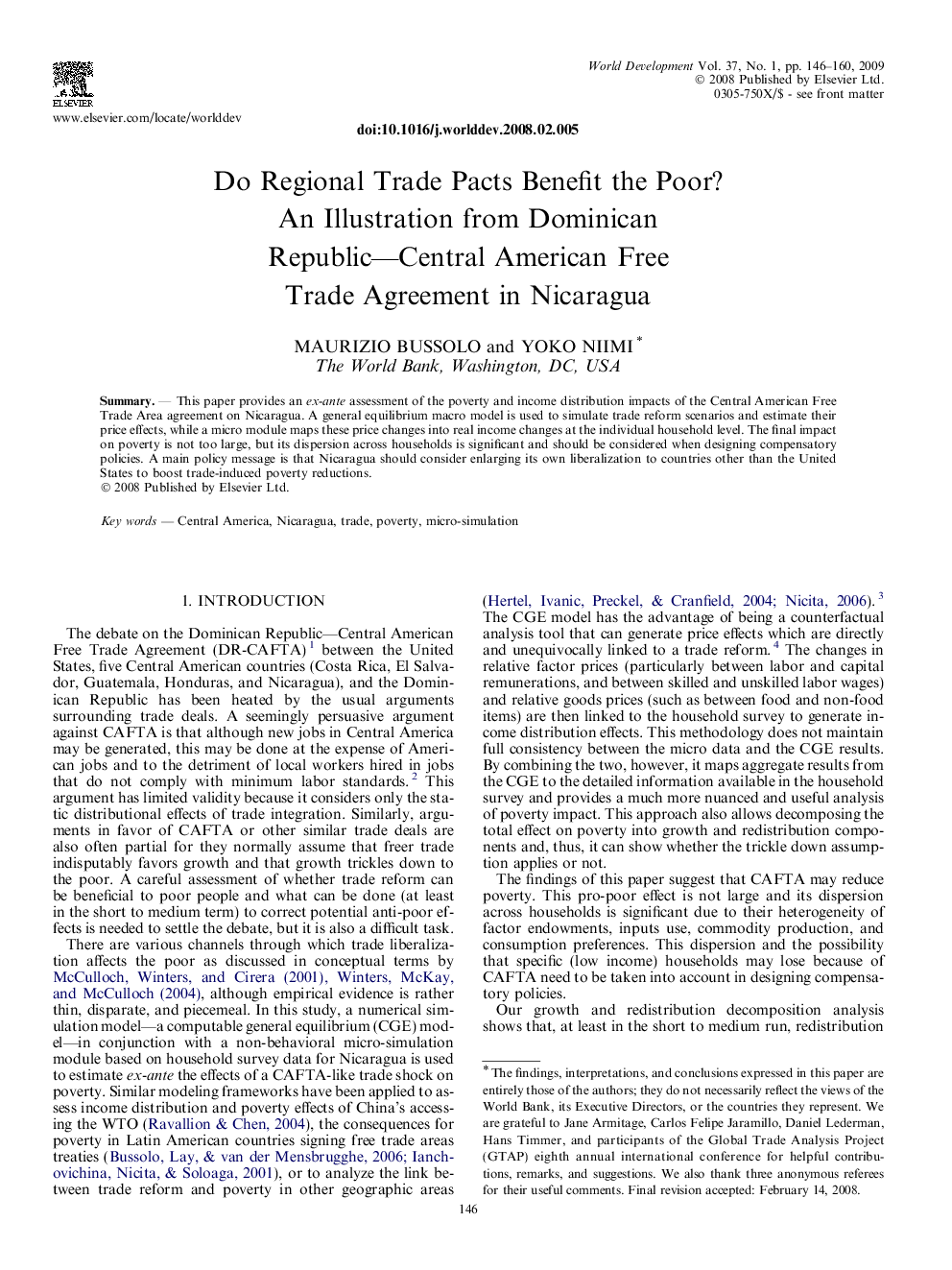| Article ID | Journal | Published Year | Pages | File Type |
|---|---|---|---|---|
| 992152 | World Development | 2009 | 15 Pages |
Abstract
SummaryThis paper provides an ex-ante assessment of the poverty and income distribution impacts of the Central American Free Trade Area agreement on Nicaragua. A general equilibrium macro model is used to simulate trade reform scenarios and estimate their price effects, while a micro module maps these price changes into real income changes at the individual household level. The final impact on poverty is not too large, but its dispersion across households is significant and should be considered when designing compensatory policies. A main policy message is that Nicaragua should consider enlarging its own liberalization to countries other than the United States to boost trade-induced poverty reductions.
Related Topics
Social Sciences and Humanities
Economics, Econometrics and Finance
Economics and Econometrics
Authors
Maurizio Bussolo, Yoko Niimi,
